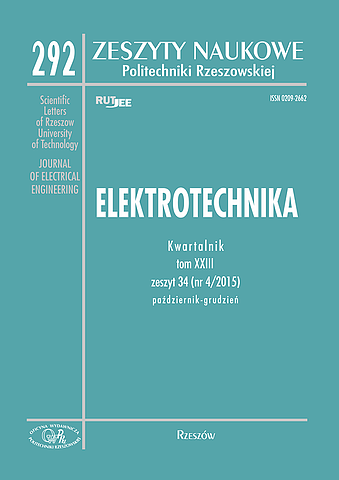Abstract
The article treats of types of short circuits. The norms used in the calculation of short circuits values are all mentioned in this article. The paper also describes parameters characteristic of short circuit current: Iκ” - initial symmetrical short-circuit current , ip - maximum current, Ib - shortcircuit breaking current, Iκ - steady-state short-circuit current, Ith - thermal short-circuit current. The source of short circuit current lies not only in generators but also in synchronous and asynchronous machines, and synchronous compensators. The sample calculation given in the article shows when the influence of machines connected to the network should be taken into account. When calculating short circuit current the impedance from one level to another must be counted. Most frequently, it is the level of the current at the short circuit point that should be allowed for. The present article discusses the aim of the short circuit calculations. The short circuit itself is usually accompanied by current flows the value of which is much bigger than in the nominal conditions. Short circuit currents may exert thermal and dynamic effects. Thermal effects lead to damaging or melting of wires, and insulation of electric devices. The high value of short circuit currents contributes to the occurrence of dynamic forces which pose a threat to the construction of electric devices and insulators. In the networks with the insulated neutral point the ground short circuit currents do not reach very high values, but their occurrence constitute a danger of over-voltage and electric shock. In the short circuit calculations all the non-linear elements in the replacement circuits, as well as the cross parameters of the circuit and load currents, are neglected. The current at the point of electrical power grid equals the nominal currant. The actual position of the transformer regulator does not have to be taken into account. In creating mathematical models of the electrical power system the calculated values of the short circuit current should be higher than those which can be measured. In order to reduce the adverse effects of short circuits all the electric devices should be chosen according to the value of the short circuit current. What is more, choke coils, network configuration, and effective protection ought to be applied.
References
[2] Kahl T.: Sieci elektroenergetyczne, WNT, Warszawa 1984
[3] Kotlarski W.: Sieci elektroenergetyczne, WSiP, Warszawa 1997
[4] Kremens Z., Sobierajski M.: Analiza systemów elektroenergetycznych , WNT Warszawa 1996
[5] Schlabbach J.: Short-circuit Currents ,The Institution of Engineering and Technology, London 2008
[6] Baran K., Kutzner J.: Zbiór zadań z podstaw elektroenergetyki, Wydawnictwo PWSZ w Kaliszu, Kalisz 2006.
[7] PN-EN 60909 – 0:2002(U). Prądy zwarciowe w sieciach trójfazowych prądu przemiennego. Obliczanie prądów.
[8] PN-EN 60909 – 3:2002(U). Prądy zwarciowe w sieciach trójfazowych prądu przemiennego. Prądy podwójnych, jednoczesnych i niezależnych zwarć doziemnych i częściowe prądy zwarciowe płynące w ziemi. [9] PN-EN 60865 – 1:2002(U). Obliczanie skutków prądów zwarciowych.





